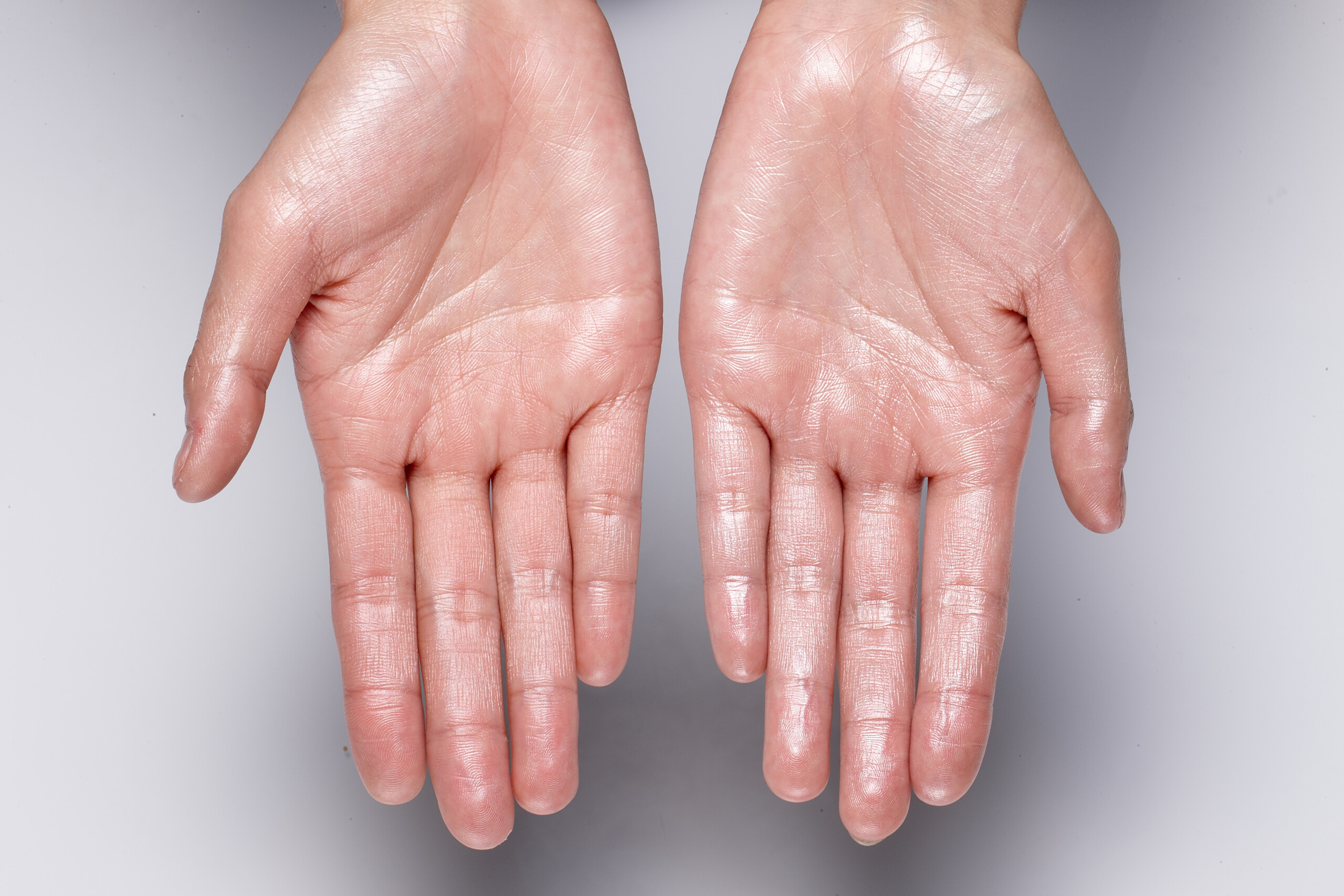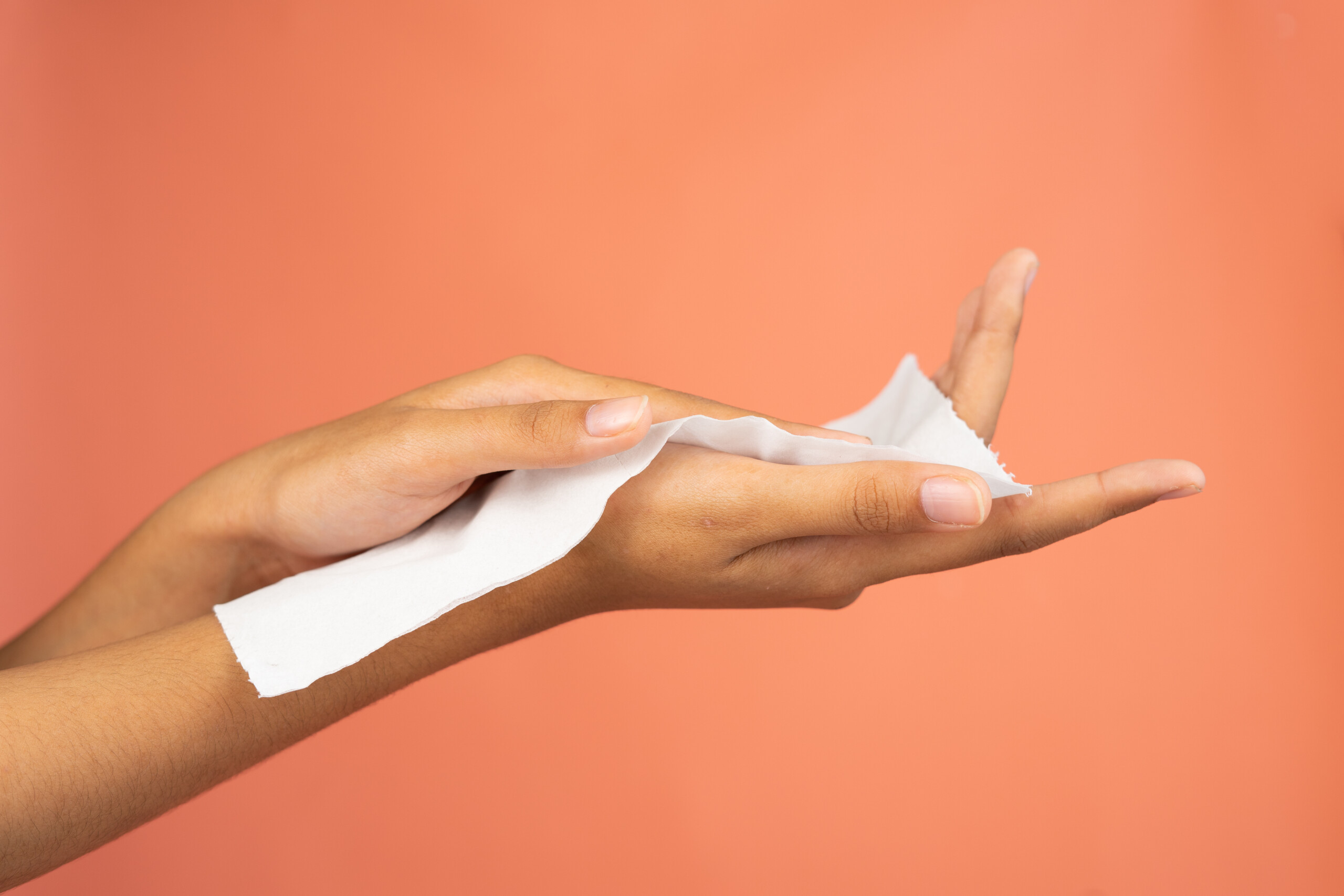Targeted Dermatology Treatments for Hyperhydrosis of Hands and Feet: Effective Solutions
Targeted Dermatology Treatments for Hyperhydrosis of Hands and Feet: Effective Solutions
Blog Article
Revealing the Intricacies of Excessive Sweating: A Comprehensive Overview to Diagnosis and Administration
Too much sweating, clinically recognized as hyperhidrosis, is a problem that impacts a considerable number of individuals and can have a profound impact on their quality of life. While sweating is an all-natural physical feature, its overactivity in hyperhidrosis presents an unique set of obstacles that commonly go past mere discomfort.

Recognizing Hyperhidrosis Causes
Hyperhidrosis triggers can be connected to various factors such as genetics, hormonal discrepancies, and particular medical conditions. Genetics play a substantial role in main focal hyperhidrosis, where people acquire the condition from their family participants. By recognizing the particular aspects adding to excessive sweating, health care carriers can tailor treatment plans to attend to the underlying reason, offering relief and improving the high quality of life for people influenced by hyperhidrosis.
Identifying Hyperhidrosis Symptoms

Additionally, hyperhidrosis signs and symptoms might show up in emotional and social distress, as individuals might feel embarrassed or anxious regarding their sweating, resulting in avoidance of social scenarios (Exessive Sweating). In addition, duplicated episodes of extreme sweating can result in skin maceration, fungal infections, and a total decline in self-confidence
Diagnostic Process for Hyperhidrosis
Initiating the diagnostic procedure for excessive sweating entails thorough examination of the person's case history and checkup. Asking about the start, duration, and triggers of sweating episodes is crucial to separate in between main focal hyperhidrosis and secondary generalized hyperhidrosis. Clinical background needs to likewise consist of inquiries regarding drugs, clinical conditions, and family background of hyperhidrosis.
Throughout the health examination, certain focus is paid to the locations affected by sweating. The healthcare company may analyze the extent of sweating, look for indicators of underlying conditions, and examine the impact of sweating on the person's top quality of life. In addition, certain examinations like the gravimetric test, starch-iodine test, or skin conductance measurements might be conducted to evaluate the amount of sweat created.
In addition, in cases where additional hyperhidrosis is suspected, extra tests such as blood examinations, pee examinations, and imaging researches may be suggested to identify the underlying root cause of extreme sweating. The diagnostic process aims to precisely determine the kind and cause of hyperhidrosis to assist suitable monitoring approaches.
Therapy Alternatives for Hyperhidrosis
When addressing excessive sweating, various therapy choices are readily available to minimize symptoms and improve the individual's quality of life. The treatment strategy for hyperhidrosis relies on the severity of signs and symptoms and the individual's action to first therapies.
Topical therapies, such as aluminum-based antiperspirants, are frequently suggested as the very first line of defense for managing mild situations of hyperhidrosis. For people with a lot more severe signs and symptoms, oral drugs like anticholinergics may be suggested to help decrease sweating.

Effective Administration Methods
To effectively handle hyperhidrosis, a comprehensive and individualized treatment strategy click for info customized to the individual's details requirements and action to previous treatments is crucial. This plan may integrate a combination of healing approaches, including way of living adjustments, topical therapies, oral medicines, botulinum contaminant shots, iontophoresis, and in severe cases, surgical interventions like gland elimination or sympathectomy. Lifestyle adjustments such as wearing moisture-wicking garments, making use of antiperspirants, and exercising stress-reducing methods can match clinical treatments. Topical antiperspirants consisting of aluminum chloride are usually the first-line therapy, with stronger solutions offered for resistant cases. Dental drugs like anticholinergics might be suggested for generalised hyperhidrosis. Botulinum contaminant injections work for focal hyperhidrosis, supplying momentary relief by obstructing the release of acetylcholine. Iontophoresis, involving the use of a reduced electrical current to lower sweat gland activity, can be valuable for both palmoplantar and axillary hyperhidrosis. Surgical choices are usually reserved for severe, refractory situations and need careful factor to consider of advantages and threats. A multidisciplinary strategy involving dermatologists, medical care doctors, and, if essential, specialists, can enhance the administration of hyperhidrosis.
Final Thought
In final thought, hyperhidrosis is a condition characterized by excessive sweating, which can substantially influence an individual's high quality of life. With proper medical diagnosis and management strategies, individuals experiencing from hyperhidrosis can locate relief and improve their general health.
Excessive sweating, medically known as hyperhidrosis, is a condition that impacts a substantial number of people and can have a profound impact on their high quality of life. By determining the specific variables contributing to excessive sweating, medical care carriers can tailor therapy plans to attend to the underlying cause, using relief and improving the top quality of life for people influenced by hyperhidrosis.
Hyperhidrosis, defined by extreme sweating past what is required for controling body temperature, can considerably affect an individual's high quality of life. Asking discover this regarding the onset, duration, and sets off of sweating episodes is critical to separate in between key focal hyperhidrosis and second generalized hyperhidrosis. Treatment for hyperhydrosis of hands and feet.In conclusion, read the full info here hyperhidrosis is a problem identified by extreme sweating, which can greatly affect a person's top quality of life
Report this page